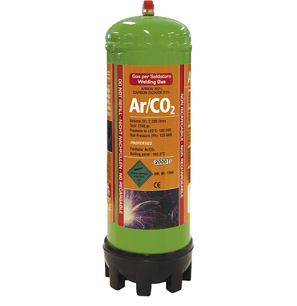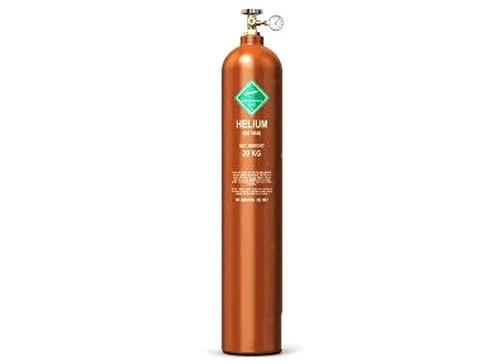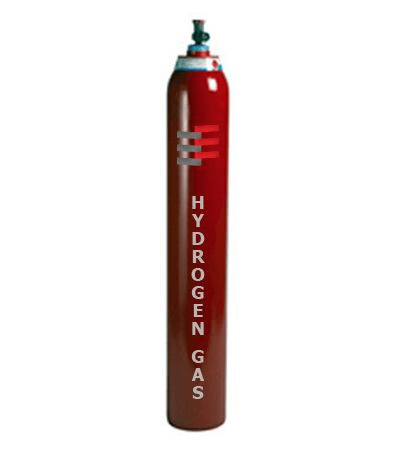MIG and TIG welding methods are two of the most popular ways to weld materials. They offer great control and precision and can be used on a wide variety of materials. However, for relatively inexperienced users, these methods could pose a very big problem.
The one thing you would not want while welding is to run out of gas. As a result, you should have an idea of the time you will spend while welding. Choosing a gas cylinder is no easy task especially if you are still coming to grips with welding. Hence, in this article, we will be helping you choose a gas cylinder that will fit your needs.
Outline
ToggleVarious types of gas
AR/CO2 Mix
Argon is an inert gas and can maintain a stable fire arc, which makes it a very popular choice in TIG and MIG welding. However, Argon/CO2 mixture is also commonly used as well as CO2 alone. This is because pure argon is more expensive as compared to a mixture of Argon and Carbon Dioxide. Proper ventilation is a must when working with these gases as they can remove oxygen.
However, AR/CO2 mix will splatter more compared to pure Argon. Using high inductance (decreases short-circuiting and lengthens arc time) is better for CO2 than for Argon. 75% CO2 25% Argon or 85%CO2 15% Argon is the widely used mixing ratio. If you don’t have issues with your weld not being the cleanest, this mix will suit you.
Helium
Compared to Argon, Helium has better thermal conductivity and higher ionization potential. Thus, it is possible to achieve a lot of heat when working with Helium. The density of helium is lower compared to Argon and it is possible to obtain higher flow rates.
As a result, a helium-argon mixture might provide better welding speed at the cost of stability. Also, Helium mixtures are quite costly as well but the increased productivity makes up for it. Helium is the most popular shielding gas to use with Aluminum and Stainless Steel.
Nitrogen
Nitrogen is rarely used but it can be mixed with Argon to weld Stainless Steel. Nitrogen offers good weld penetration and arc stability. Nitrogen also helps to prevent the formation of oxides, which might contaminate and weaken the weld. It does not react at room temperature but you should note that Nitrogen should be avoided when working with carbon steels.
Hydrogen
Hydrogen is used when the need arises for high temperatures. It is a common shielding gas and can be combined with Argon while working on stainless steel. Hydrogen is also involved in the process of making jewelry. It is a good option for any welding procedure that requires a high amount of heat.
How to know what size cylinder I have?
For Argon cylinders, there are a few standard sizes available. By measuring the height and diameter, you can easily find out the capacity of the cylinder. Read the table below for information regarding the size.
| Size | 125cf | 40cf | 80cf |
| PSI | 2265 | 2015 | 2015 |
| Diameter | 7 inch | 7 inch | 7 inch |
| Empty Weight | 58 | 24 | 47 |
| Height | 45 inch | 22 inch | 35 inch |
| Full Weight | 71 pounds | 28 pounds | 56 pounds |
Here cf refers to cubic feet.
If money is not a constraint, then you ought to buy the largest tank. This will also give you the most use time as well. Also, the 125cf tank is not too big. If you can’t afford it, choose one of the other two tanks according to your needs.
Another important factor that you should take into account is that bigger tanks can be easily refilled. It costs less, that’s why when buying a gas tank, always look for the biggest one you can buy. Some of those very big tanks that you have seen are not available for sale. Those are available only on lease and for people who run enterprises or businesses.
Kindly note that depending on the manufacturer, there might be slight variations in the dimensions. Moreover, sometimes the tank sizes could be indicated by an alphabet. Usually, it is ‘V’ for 40cf, ‘Q’ for 80, and ‘D’ for 125cf respectively.
What Are The Sizes of Welding Tanks
High-Pressure Cylinder
| Size | Name | Diameter (in) | Height (in) | Weight (lbs) |
| 20 cf | R | 5 | 17 | 17 |
| 60 cf | Q1 | 7 | 21 | 29 |
| 125/150 cf | S* | 7.5 | 46/50 | 61/70 |
| 40 cf | RR | 7 | 24 | 25 |
| 80 cf | Q | 7 | 32 | 47 |
| 250 cf | K | 8.5 | 51 | 133 |
Acetylene Cylinder
Acetylene is usually combined with oxygen for oxy-acetylene welding. It has a rating of 250 psi, which is considered a fairly good pressure. Due to the volatile behavior of the gas, it needs to be stored in specific cylinders.
| Cylinder Name | Capacity in cf |
| MC | 10 |
| AX75 | 60 to 75 |
| MED | 200 to 250 |
| B | 40 |
| LG420 | 420 |
| SM or WS | 120 to 140 |
| LG310 | 300 to 340 |
Tanks having a capacity of more than 125 can only be leased and are not available for purchase.
Propylene Cylinder
Propylene has a lesser heating capacity with respect to Acetylene but is much safer to use. Also, it has the advantage that it works well in cold temperatures. It is colorless and is usually mixed with a slight amount of oxygen. It is best used for fusion welding, brazing, and heating.
| Size | Weight (lbs) | Diameter (in) | Height (in) |
| 60 cf | 48 | 12 | 44 |
| 6 cf | 8 | 6 | 22 |
| 100 cf | 75 | 15 | 48 |
| 25.5 cf | 25.9 | 9 | 33 |
Propane Cylinder
Propane is also a combustible gas but its main purpose comes after the welding for brazing. Propane is not usable for Gas Welding since it does not possess the reducing zone for cleaning the steel surface. It is not as hot as propylene but still gives out a good amount of heat.
| Size | Diameter (in) | Height (in) | Weight (lbs) |
| 20 | 5 | 14 | 11 |
| 80 | 7 | 32 | 47 |
| 40 | 7 | 17 | 24 |
| 125 | 7 | 43 | 58 |
| 60 | 7 | 23 | 29 |
| 150 | 7 | 47 | 61 |
Finding the Right Size Cylinder
First and foremost, you can only purchase a cylinder with a capacity of up to 125cf. Moreover, it would weigh between 60 and 80 pounds. To choose the appropriate cylinder for you, here are some factors that need to be considered.
- Portability- If you need to travel a lot to the worksite, then buying a medium-sized cylinder would be better.
- Usage Frequency- If you run a business, then you need to get a bigger cylinder compared to someone passionate about welding.
- Refilling- Smaller cylinders have a higher refill frequency compared to the bigger ones.
- Ventilation- Good ventilation is necessary while working with these gases.
Also, if you have moved to a new location, you need to return back the gas cylinders. This is because dealers only refill cylinders that come from a particular location or manufacturer.
Gas Cylinder Safety
Welding using gases is a dangerous activity and you need to take some precautions to ensure that things go smoothly.
- Use protective equipment like Gloves, Safety Glass, Boots, etc
- Ensure that the piping and valves in the cylinder are in order and working properly.
- Keep the cylinder away from combustible materials.
- Close the valve when the cylinder is not in use.
- Clean the valves and cylinder regularly.
- Keep the cylinder upright
- Do not use the valve cap to lift the cylinder.
- Always use handcarts to move gas cylinders.





